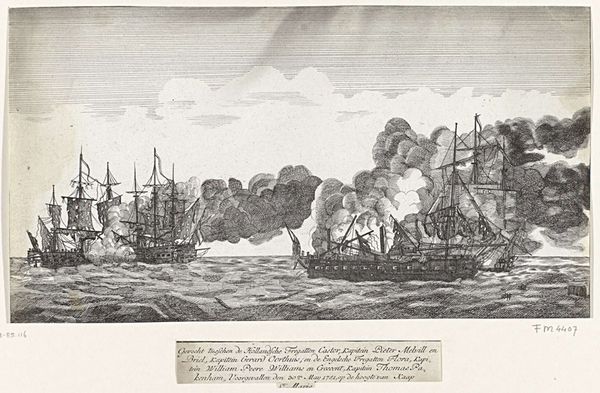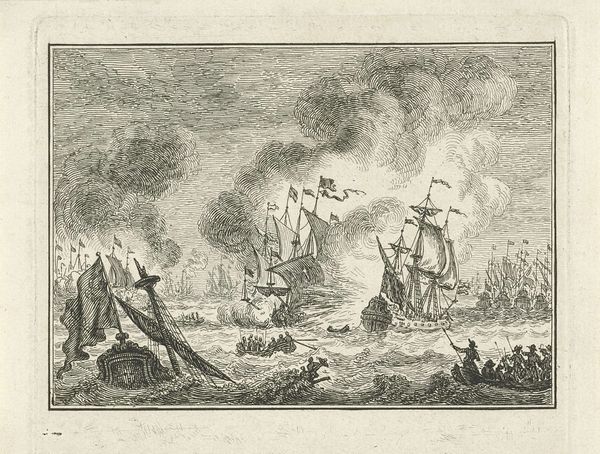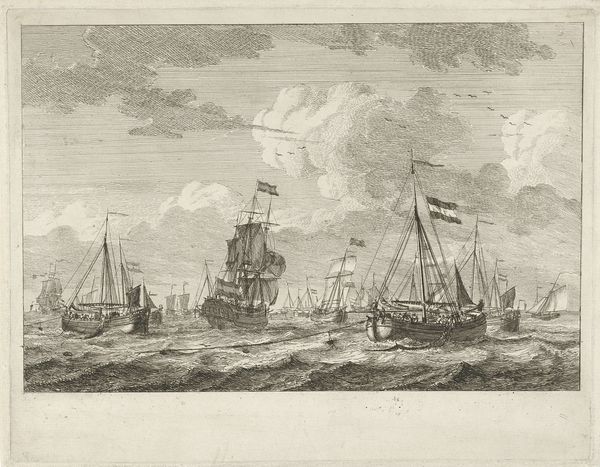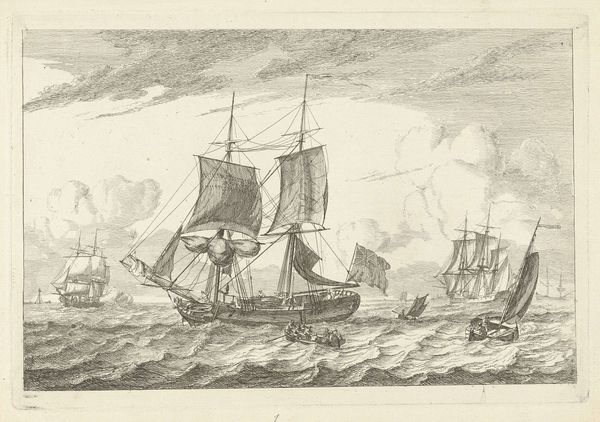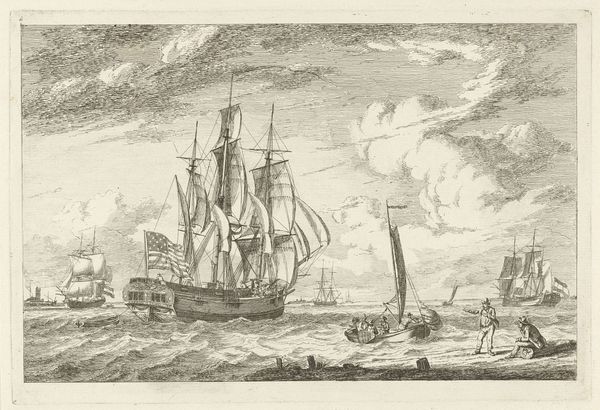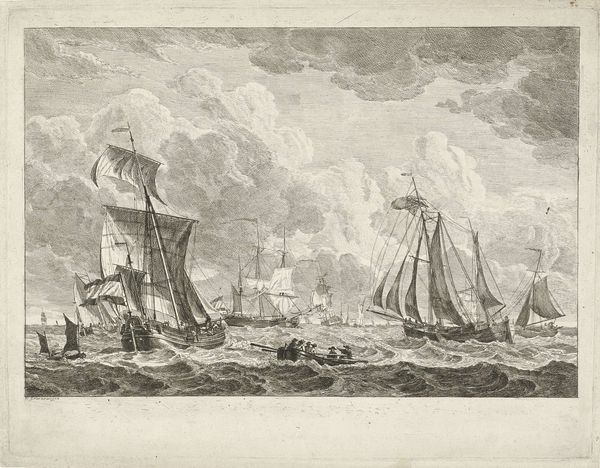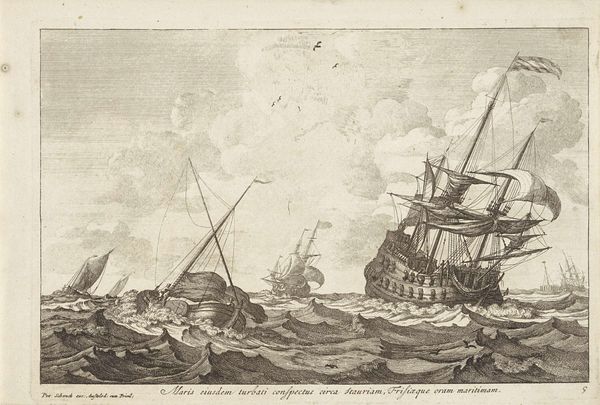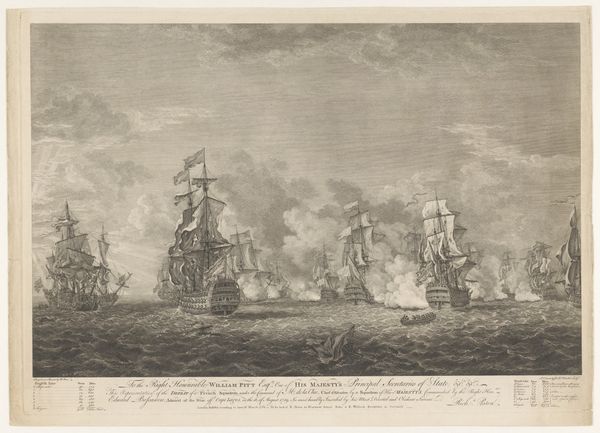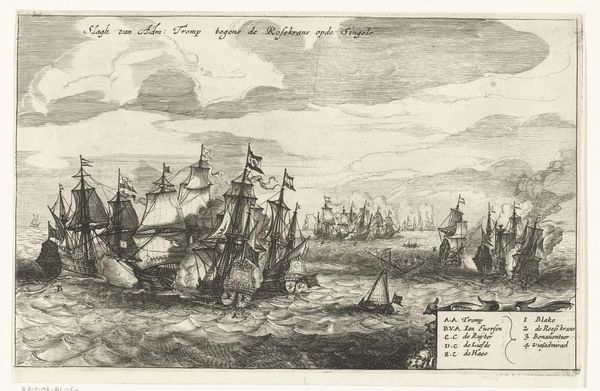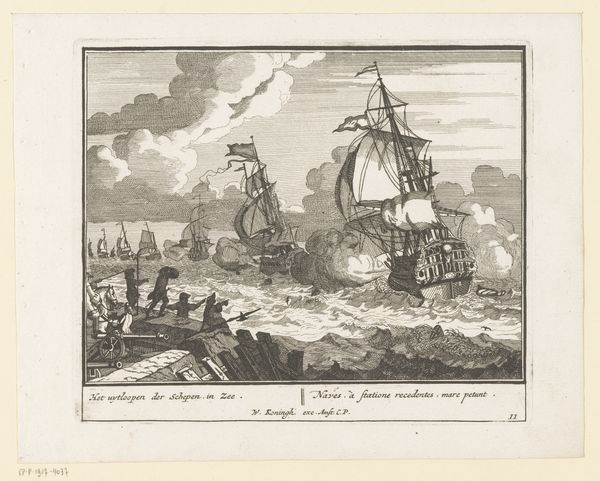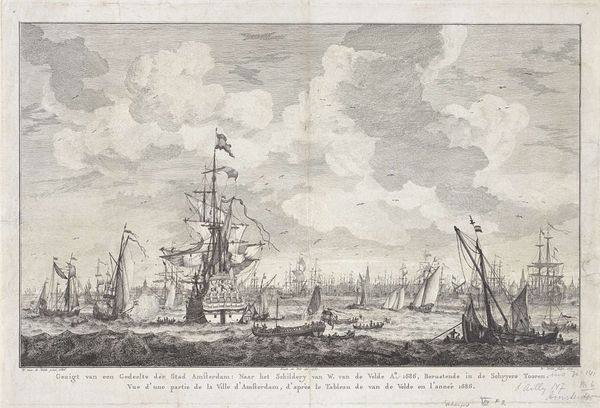
print, engraving
#
baroque
# print
#
landscape
#
cityscape
#
engraving
Dimensions: height 502 mm, width 565 mm
Copyright: Rijks Museum: Open Domain
Curator: What a dramatic scene. Pieter Schenk created this engraving, titled "Schepen bij storm," sometime between 1675 and 1711. It's currently held at the Rijksmuseum. Editor: It's unsettling, a total chaos of sea and sky! The monochrome heightens the sense of impending doom. I'm immediately drawn to the ships battling the waves. Look how they seem to writhe against the water, struggling for survival. Curator: Right. Schenk, active as a printmaker, particularly excelled at rendering landscapes and cityscapes. He made this engraving to portray ships during a storm, but its patronage also makes the piece so interesting. He was not just illustrating nature; he was also engaging with maritime power through his patron Nicolaes Witsen, a powerful figure in the Dutch East India Company. This print showcases the raw force of nature but also implies Dutch mastery of the seas, however precarious. Editor: It's fascinating how the details emerge. Knowing it’s an engraving sheds light on Schenk’s process— the meticulous carving into the metal plate to create such an immersive texture of water, waves, and rough weather, the contrast achieved through simple lines that create varying density... It almost makes one think about the cost of this “mastery," about the risks and resources that Dutch traders devoted to exploiting marine space. Curator: Yes, and in some sense these tumultuous scenes contributed to national identity. They resonated with the Dutch Republic’s struggles for independence and its burgeoning naval power. This wasn’t just a visual record, it was propaganda! And prints such as this had a key role in visualizing, disseminating, and embedding the visual symbols of national prestige across the Republic, shaping opinions, cultural tastes, and commercial attitudes. Editor: Seeing it that way definitely changes my perspective! What appeared like a generic depiction of maritime events seems highly constructed and intentional! The print is itself a commodity, isn't it? Facilitating a very specific reading of sea trade! The labor involved and its inherent dangers get overshadowed in favor of promoting dominance and success. Curator: Exactly. By examining the material, the context, and its production, we gain a deeper understanding. This print reveals a nexus between art, maritime power, and national identity in the Dutch Golden Age. Editor: And on how certain versions of the landscape get solidified in public imagination. I won't be seeing it quite the same way again. Thanks!
Comments
No comments
Be the first to comment and join the conversation on the ultimate creative platform.

